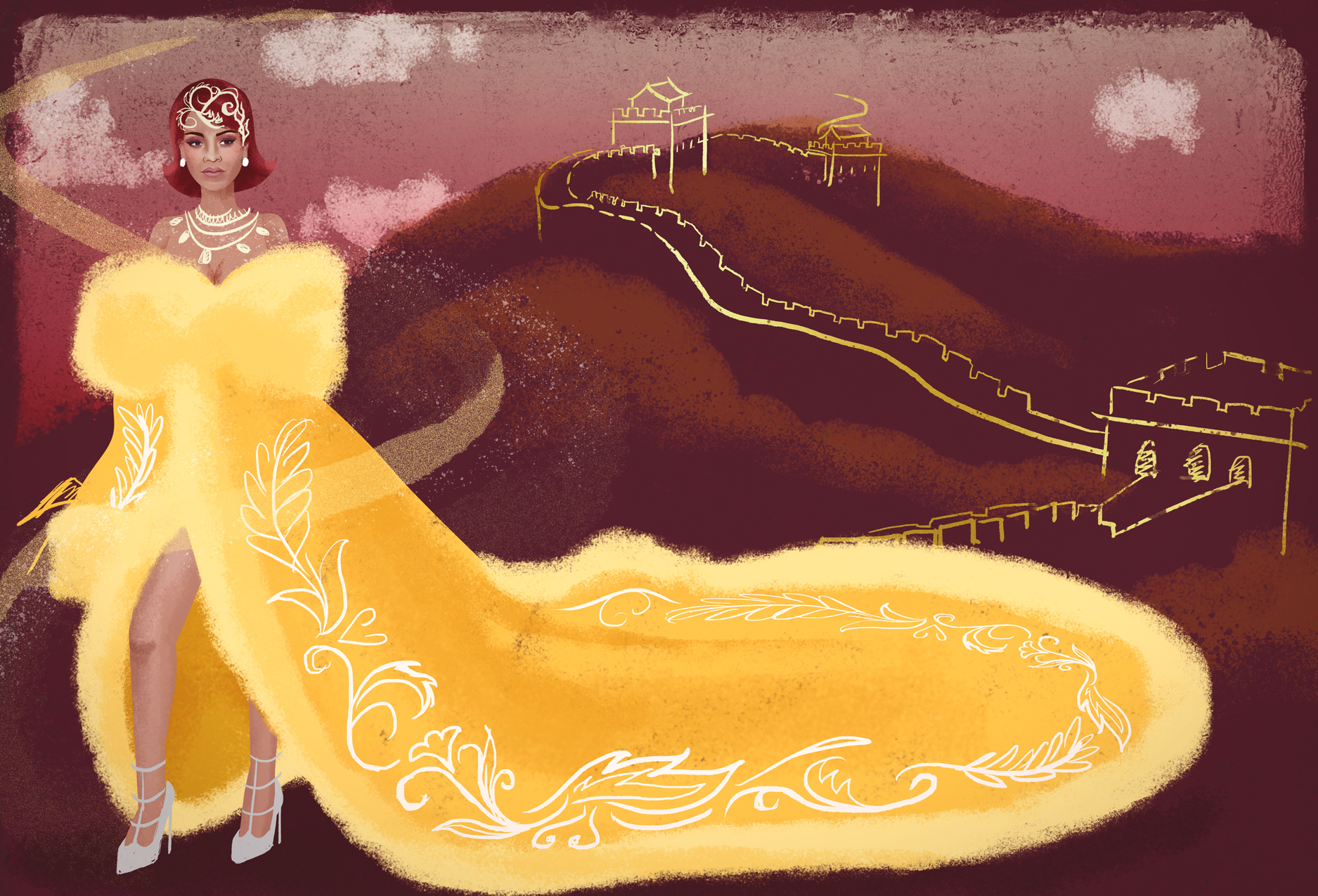The Double-Edged Fairy Tale Behind Rihanna’s Met Gala Dress
Once upon a time in a land far far away lived a little girl who loved to sew. She attended China’s first design program in 1982 and rebelled against the staid streetwear her classmates churned out, opting instead to create a gigantic white wedding dress replete with bamboo pannier for her graduation show. For ten years thereafter, she toiled anonymously in a ready-to-wear company. Dreaming of crafting fantastical gowns for Tang dynasty princesses and Qing dynasty empresses, she saved up enough money to start her own company in 1997 and called it Rose Studio. She made art pieces that took thousands of hours of meticulous hand labor, but customers refused to pay for little more than the cost of the materials. Another decade passed.
In 2010, The New York Times’ T Magazine profiled Rose Studio’s founder, noting that her dresses “equaled, and in some cases, surpassed, the technical feats of Paris couture." Lady Gaga’s stylist came calling to borrow clothes. Chinese starlets such as Li Bingbing wore her creations on international red carpets. And then, in 2015, Rihanna ascended the staircase at the annual Met Gala, a fur-lined coronation cape draped around bare shoulders with a sixteen-foot train fanning behind in ripples of embroidered imperial gold. This is when the world met Guo Pei. [1]
Today, Guo Pei is officially registered on the Paris Couture Week calendar. With two couture collections under her belt and a MAC Cosmetics collab to boot, she has gained the kind of international recognition that has until now eluded China’s fashion industry creatives. Recognition goes hand in hand, of course, with critical scrutiny. Western fashion editors who acknowledge the exquisite artisanship of Guo Pei’s dresses nonetheless find them anachronistically “hyper-feminized”. [2] Back on home territory, she is similarly considered “a great costume designer” without much contemporary purchase. [3] Guo Pei’s fairy tale aesthetic, in other words, may well become her Achilles’ heel.
While I sympathize with fears that Guo Pei, as China’s representative couturiere, risks reinscribing Orientalist stereotypes of an exotic, retrograde femininity into not only Chinese fashion but Asian fashion more broadly, I also think these critiques are completely off the mark. [4] Are Guo Pei’s glittering, hand-embroidered confections anachronistic or is the entire haute couture enterprise, with its elaborate requirements of Paris atelier, a certain number of workers and worker-hours per dress and fittings and so on, just a little antediluvian? How are her fringed sequined numbers any more costume-y or overtly Belle Epoque or Byzantine than, say, Elie Saab’s collections? Valentino’s? In fact, as an official member of the Chambre Syndicale de la Haute Couture, Guo Pei is exactly on the mark.
A few weeks ago, I met the designer after a superb Q&A session hosted by New York’s China Institute. We chatted in Mandarin about her kids (she has two daughters, an art school bound seventeen-year-old and a nine-year-old), her thoughts about launching a house fragrance (not quite yet) and the beautifully cut shift she was wearing that morning (her own design). It’s evident that she remains starry-eyed about being a couturiere – about being able to realize the gowns of her dreams, that is, without worrying about how to finance them because her customers are now willing to pay any price. [5] “Some of the dresses I make today, I will never sell,” she averred at the China Institute event. “They are my legacy to my country.”
Notes
[1] Photos of Rihanna in the Guo Pei gown went viral on social media for a week following the gala.
[2] Amy Verner, “Fall 2016 Couture: Guo Pei,” Vogue.com July 5, 2016, accessed October 23, 2016, http://www.vogue.com/fashion-shows/fall-2016-couture/guo-pei.
[3] “[T]here is no new style or concept to her clothes,” opines one Beijing fashion professor in the widely-read New Yorker profile on Guo Pei published earlier this year. “You get upward mobility with Guo Pei, but not the forward kind,” adds another.
[4] For excellent discussions of the insistent Orientalizing of Asian fashion design, see Sandra Niessen et al, eds, Re-Orienting Fashion: The Globalization of Asian Dress (New York: Berg, 2003) and Dorinne Kondo, About Face: Performing Race in Fashion and Theater (New York: Routledge, 1997).
[5] One customer famously offered $700,000 for Guo Pei’s “Magnificent Gold” dress, a centerpiece of the Met Costume Institute’s 2015 “China: Through the Looking Glass” exhibition. Guo Pei famously refused.



